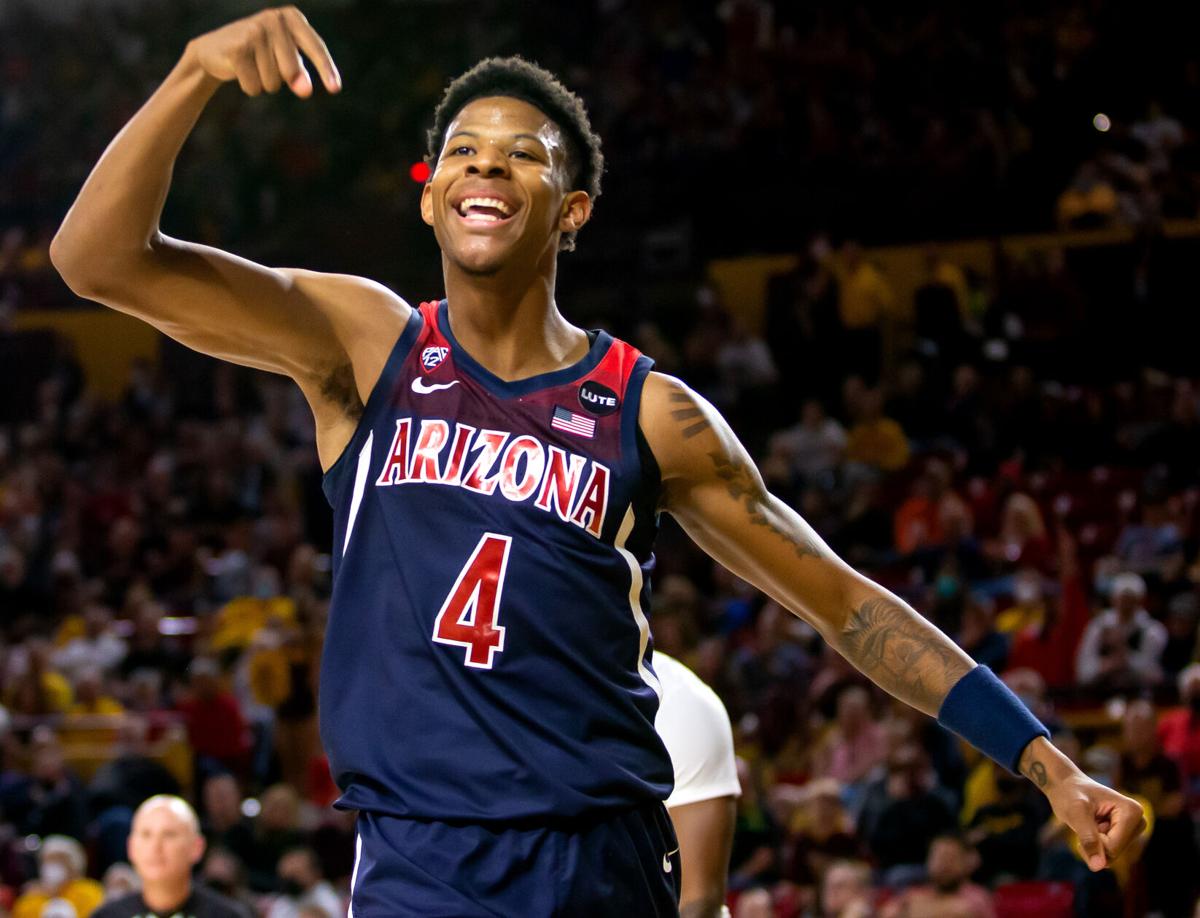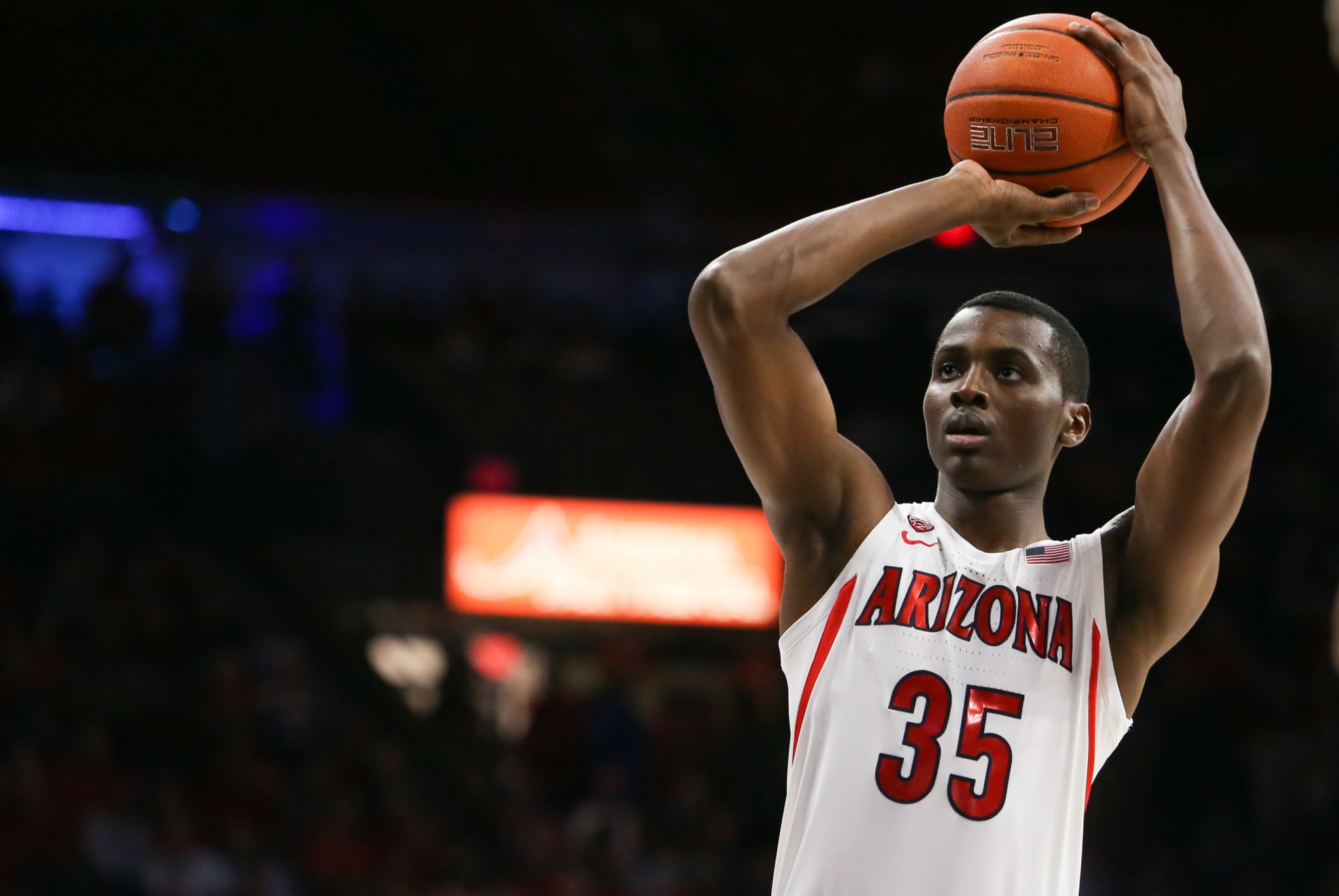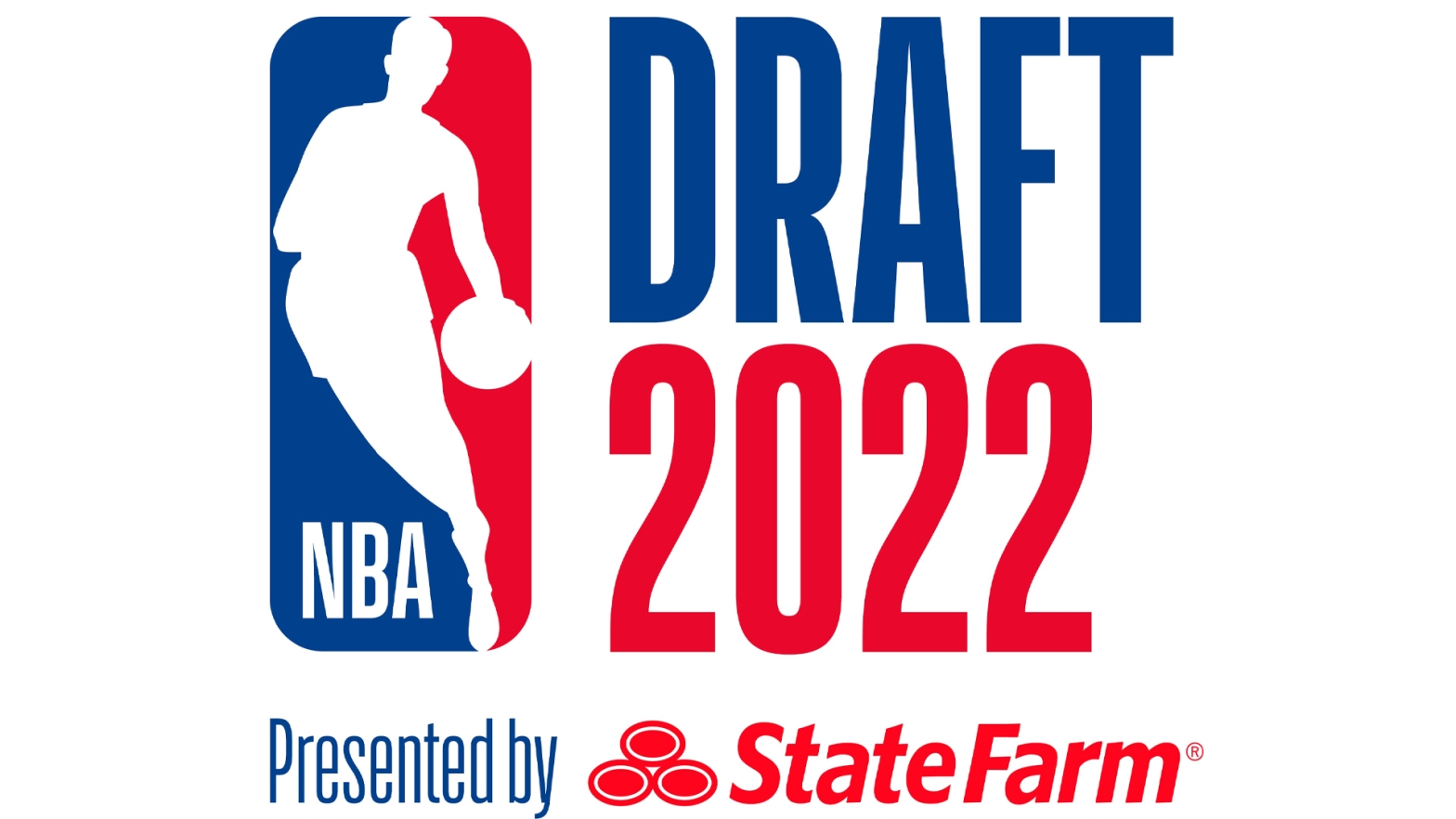There is a vast amount of high qualitative draft coverage, which I will not be able to reproduce nor would it make sense to do so. Still, I would like to add some details that I either haven’t seen mentioned as much as I’d like to or that are worth stressing once more when discussing the future and potential of the three Arizona players that will be selected in this year’s draft.
Bennedict Mathurin

Wing, potential as secondary Ballhandler?, young sophomore
Out of the three players that Arizona sends to the NBA, Bennedict Mathurin is the one who is projected to be the highest pick with the best chances of having a long career as a professional.
This is not surprising considering the fact that he was Arizona’s go-to-option whenever one of the best offenses in college basketball needed a bucket. The debate about Mathurin’s future centers more around the questions like in what role he will excel, which of his skills are transferable to the NBA environment, and in which dimensions the arsenal of the canadian has still to grow.
In my opinion four aspects are worthwhile considering when projecting Mathurin’s possible development patterns.
- Shooting
Every profile you will read about Benn Mathurin will probably start with his shooting, since this is his calling card to not only put his foot in the door step but keep it wide open for the years to come.
Mathurin is probably the best shooter of this class when it comes to pure shot-making out of different screening actions. The wing has a unique ability to sprint around screens, and then within a split second shift his body to square up his body towards the basket all while being in full balance.
So even if his further development is plateauing rather quickly, Mathurin should at the very least find his niche as a shooting specialist. His percentages do not look spectacular, but it would be very surprising if he isn’t able to improve his success in catch-and-shoot scenarios.
- Passing
While his shooting gets mentioned every time and is the dimension most accurately analyzed, his improvements as a playmaker for others fall a little under the table. But to me, this is the part of Mathurin’s game where I was most surprised to his development.
Most importantly, Mathurin is capable of making the correct and simple read when a defender shifts in his way and leaves an open shooter at the three point line. This is especially helpful, since Mathurin will run off a lot of down screens and defenders of the passer have a tendency to stunt-and-recover, go for the steal or simply watching the action while losing track of their own man. If Mathurin is able to punish that, which he should be, this would make his presence as a shooting threat even more appealing.
In addition to that, Mathurin also showed glimpses of his high Basketball IQ, court vision and passing abilities. Every other game – especially in the second half of the season – he had a pass that nobody really saw coming. This covered an array of passes going from half court alley-oops to directing traffic in transition and finding his trailing big man to throwing nasty no-look passes in traffic to his roll man:
So if Mathurin’s development takes its optimal projection, he might become even a secondary ballhandler down the road.
- Drives & Finishing
The one dimension where Mathurin really needs to sharpen up as a player is his ability to get to the rim and then to finish exactly there. At this point he is mediocre finisher around the basket which is a little disappointing considering his overall athleticism and explosiveness.
Indeed, if Mathurin has some room and time to navigate his way to the basket he can really be a devastating finisher – he did not by accident have the most vicious dunk of this year’s NCAA tournament.
But on the other hand Mathurin lacks some important abilities that he would need to improve his finishing around the hoop. First of all, Mathurin is favoring two-feet-finishes. Even if he is ahead of his primary defender he changes his rhythms most of the times. This kills his momentum and makes the layup more difficult than it’s supposed to be.
While you could argue that this is simply a matter of technique and training, this issue might be related to another one: Mathurin’s hip flexibility seems to be limited. He is not able to turn the corner all the time, meaning he cannot shift his body hip around the hip of his defender to get past him. This allows defender, who are slower and less athletic, to angle him out on the way into the paint.
It remains to be seen if Mathurin can work on these two problems. At least he showed enough glimpses to keep the hope of him developing into a secondary ballhandler alive.
- Defense
The biggest weakness in Mathurin’s game – and I’m not sure if a lot of people are aware of this fact, since they project him as a 3-and-D-Wing – is his perimeter defense.
Once again, his limited hip flexibility seems to be a major reason why Mathurin has such a hard time staying in front of his matchup and not allowing straight line drives. Quite often Mathurin back pivots before sliding his feet, which opens up the direct path to basket.
Also, in closeout situations Mathurin does not show the footwork you would like to see, resulting in drives of opponents.
On a final note, character and demeanor are something that are very important predictors of future success. It is simply impossible to have valid takes in that regard from the far outside. Something that still stood out to me was the joy Mathurin seemed to play with even in critical pressure situation.
Dalen Terry

Wing, allrounder, ideal role player with considerable upside
One of the biggest risers in the pre-draft process was certainly Dalen Terry. While Arizona’s swissarmy knife did not receive a whole lot of attention during the vast majority of the season, you could sense a shift in that regard towards the end of the season.
Arizona’s floor general Kerr Kriisa twisted his ankle during the PAC-12 tournament and had to sit out several games and certainly did not look like himself in the two games after his return. So Dalen Terry was asked to take over duties as the lead guard. Especially in the first round game against Wright State, Terry showcased his entire package of tools.
A problem in the assessment of players like Terry, who emerge relatively late as potential NBA players, is that people who cover the draft on a more or less voluntary basis did not monitor these players over the course of their careers, watch tape or numbers in retrospect and are in my opinion more likely to fallacies and biases.
Three aspects of Terry’s game stand out to me that I feel are important to highlight and maybe haven’t been done to this extent – at least to my limited knowledge.
- Improved Shooting
It’s absolutely fair to say that Dalen Terry was a non-shooter starting his freshman year. There are several indicators to strengthen this argument. Looking at mere statistics, as a Freshman Terry hit about one three pointer every second game (14 made threes in 26 games) at a 32% clip. Additionally, he only converted on 61% of his free throw attempts.
These numbers improved quite a bit in his second season in Tucson. Especially at the free throw line Terry looked much more comfortable, increasing his percentage by 12 percentage points and having less variation in the severity of misses. Similarly, Terry was way more aggressive from the 3 point line, making 0.8 shots per game from beyond the arc while shooting it at 36%. He still far away from being a reliable shooter, but at least he doesn’t hesitate to take threes anymore and therefore has much better rhythm on his jumpers.
The improvements can be attributed to slight, but important changes in his shooting form. Terry used to have a very low point of release while the elbow drifted way towards the right resulting in misses to the right and left all over. In comparison, as depicted on the right from the last game of the season, Terry now has a higher release point which enables him to have his right elbow in line with his wrist and his hip which is a drastic improvement.


Even though there is still room to grow as a shooter, Terry made enough progress to label him as an average shooter now and it’s reasonable to think that he will stabilize his form even more.
- Versatility
Versatility is inflationary used when describing players who do not really possess a real strength or can be categorized as a certain archetype. But in the case of Terry, it’s absolutely accurate to label him as an allrounder. Several aspects of his playing style can have an impact on the outcome of a game and it is actually really hard to pin down the one area where he will contribute the most for his future team.
In general, Terry plays with a lot of joy and energy that is contagious. This energy is usually channeled at the defensive end, where the wing can be a pest on the ball. Due to his long arms and his quick feet, he can put a lot of pressure on the ballhandler while not being at risk of getting beaten.
On the other side of the court, Terry can be effective without having to have the ball in his hands all the time. He shows his high Basketball IQ as a cutter and also has neck for offensive rebounds.
When Kriisa sat out, Terry took over as the primary ballhandler – a role which he filled out in short stints before. In this span he showed that he can run an offense. At least he doesn’t commit many turnovers and keeps things simple. He can hit the roll man in the Pick & Roll or find shooters out of down screens. Still, it’s hard to see that he can be an initiator of a NBA offense.
- Not a Point Guard
And this is exactly what should be underlined. While Terry is certainly capable of running a Pick & Roll from time to time and showing sound decision-making, you should not see him as big Point Guard who will run the show.
Maybe this limits his offensive potential and upside, but not everybody has to be a star. DT will star in his role and have a long-lasting NBA career. As mentioned before, he impacts a game in different ways and knows how to help his team win games. Those players are not easy to find.
Christian Koloko

Big, rimprotector, potential as a switching big, solid finisher, potential as shooter
Similar to Terry, Christian Koloko is a prospect that only emerged within last season as a real NBA player. He made major strides every season, but last year’s growth was even more impressive. He is probably one of the three best rimprotectors available, but offers even more tools and potential skills that could lift him into the starting position for a contender.
- Improved Strength
One of the biggest and most important improvements of Koloko is his physical growth. When he stepped on campus, he was listed with 215 lbs, which seemed to be very generous. Last season, he was listed at 230 lbs. This does not sound much, but for a big man with the stature of Koloko, this is quite some change.
And more importantly, Koloko did strengthen his core and upper body, giving him more stability to battle in the paint, while not losing his mobility and quickness. When Arizona met with Illinois, Koloko had to deal with Kofi Cockburn – probably the hugest human being in college basketball since Andre Drummond. And Koloko won the battle, forcing Cockburn into a lot of tough shot attempts and even blocking some of them.
Offensively, Koloko is now able to seal of smaller defenders and punish mismatches after switches. This one of his weaknesses in his first two years. Now he is almost unstoppable due to his combination of length, athleticism, understanding of angles (see below), and increased strength.
- Improved Skillset
Last season, Koloko doubled his scoring average from 5.3 PPG in 20-21 to 12.6 PPG in 21-22. For the first time in his three years at Arizona, the big man had a usage rate of more than 20% and still managed to improve his efficiency: more than 64% of his two point attempts were successful. And this is not an accident or result of simply converting good passes.
Koloko showed much better awareness in terms of fighting for position, creating good passing angles, and holding these angles as long as needed. Additionally, Koloko improved his game with the back to basket. As a result, he now possesses a reliable jump hook with his right hand, can navigate his way with nimble footwork through traffic, and even started using his off hand much more in the late stages of the season. In the round of 32 game against TCU, Koloko was simply unstoppable, scoring 28 points on 12-of-13-shooting from the field.
But not only inside the paint, Koloko managed to refine his game. His passing abilities improved drastically as he often connected with his front court partner Azuolas Tubelis for high-low actions with flexible role reversals in terms of who was the passer and who the receiver. Koloko had 4 assists in one game on two occasions and even had a rare 17-points-12-rebounds-6-assists-and-5-blocks stat line in the first round matchup against Wright State.
One of the next steps is the development of his shot. Again, he already made a lot of progress. In his freshman season, Koloko looked totally out of sync when stepping at the charity stripe, converting only 35% of his free throws. As a sophomore this percentage jumped to 63% and last year he hit 74% of his free throws. It would not be a huge surprise if Koloko starts hitting three on a regular basis. He has the touch to develop a somewhat reliable outside shot.
- Rimprotection
As stated above, few potential rookies in this draft offer the same amount of rimprotection compared to Koloko. The native of Cameroon does not only rely on his length and athleticism. While players like Chet Holmgren or Mark Williams offer a little more in this regard, Koloko shows exceptional food speed, quick elevation on his jumps and almost perfect timing.
There were lots of layups where everybody in the arena did already see an Arizona opponent score two easy points, when suddenly out of nowhere Koloko stepped or rather jumped in to prevent the ball from going through the net. Koloko is a real goalkeeper that saves his teams points when it should not be possible anymore.
In addition to this already intriguing aspect, Koloko is very light on his feet and should be able to even switch out and keep talented ballhandlers in front of him. Koloko showed his potential in this regard already throughout the saison and will only get better the more experience he has under his belt.
It would not surprise me, if Koloko ends up being the big with the best and longest NBA career out of all players drafted this year, not named Chet Holmgren. Koloko fits the modern NBA perfectly and still has a lot of untouched potential that awaits to be revealed.
